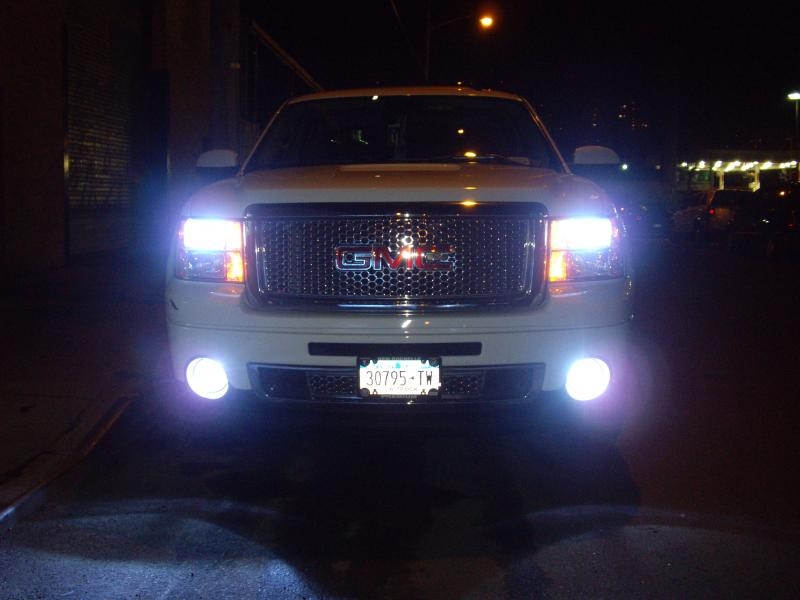
Xenon and halogen lights use a gas to help increase bulb effectiveness, but there are several key differences between them. Halogen lights are an older type of bulb that uses halogen gas primarily as a buffer and backup system, while xenon lights depend wholly on xenon gas to produce light.
Most headlights used in modern vehicles are halogen bulbs. These lights use a gas compound that contains halogen, which interacts with the filament producing the light. Like traditional bulbs, the halogen bulb uses the resistance of a filament to produce light by sending an electrical current through it. Headlight filaments must be strong and are usually made of, or coated with, tungsten to give them durability. The halogen interacts with the tungsten and helps replace lost particles while the light is turned off. This allows halogen lights to maintain the same light intensity throughout their lives.
Xenon bulbs, or as they are more accurately called, Xenon High Intensity Discharge (HID) bulbs, forgo the filament and use only xenon gas. An electrical current is channeled through the gas in an arc, and the resulting reaction excites electrons in the xenon atoms, creating light. A ballast is used to ensure the right voltage is maintained inside the bulb.

Xenon HID lights are a more recent invention and offer several benefits over halogen. They last much longer than the conventional halogen bulb and have a higher lumen output (brightness). Though halogen is dependable, the bulb still uses a filament that will eventually burn out, while xenon bulbs use only gas and electricity, allowing them to last two or three times longer. Similar xenon bulbs also use less energy than a halogen equivalent. The color temperature of xenon bulbs is around 4,500 degrees Kelvin, producing a bright, white light similar to natural daylight.
While halogen bulbs do not have the lifespan or light intensity of xenon units, they are still much more common, and it is easier and less expensive to replace halogen bulbs. There is also some controversy as to how much better the xenon bulb's light is, if at all, and different bulbs will have different effects. The color temperature of halogen bulbs is around 3,200 degrees Kelvin, resulting in a warmer, more yellowish light than xenon light.
Because of the greater efficiency of xenon bulbs, they are being used more often in the construction of headlights. This does not mean that a driver with halogen headlights can simply replace their bulbs with xenon versions to reap the benefits. The xenon bulb uses an entirely different system, which takes up more space than the halogen bulbs, and if the vehicle is not made for xenon lights, it may be an expensive or impossible process to convert.